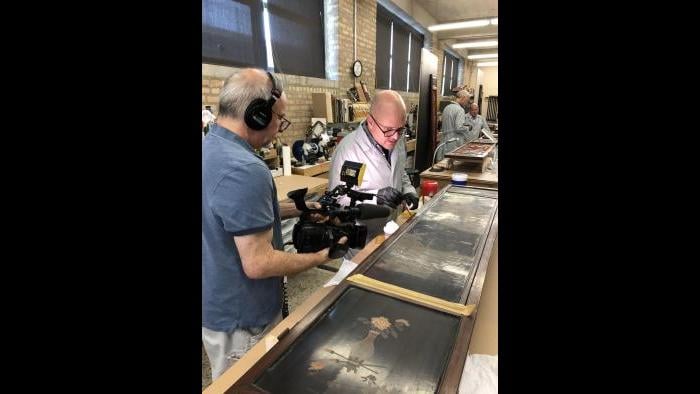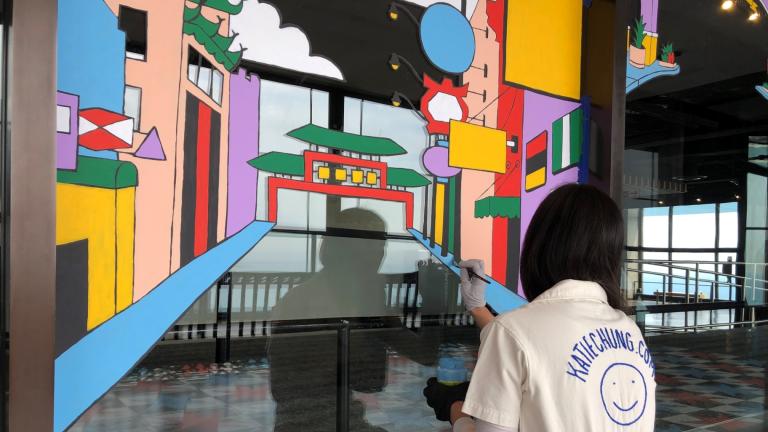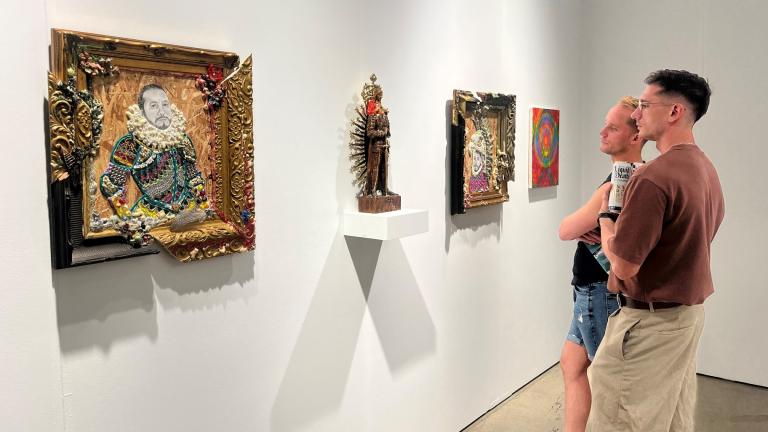A Chicago company is dedicated to preserving artworks and heirlooms from around the world. We visit The Conservation Center, the country’s largest private conservation lab for a look at how they are rejuvenating an artful piece of Chinese history.
TRANSCRIPT
Jay Shefsky: Birds sculpted from stone. Bamboo leaves carved from jade. Scenes of China etched in rosewood.
These are all facets of an imperial screen given to Emperor Qianlong in the 18th century. Its 10 panels are being meticulously cleaned and preserved to rejuvenate the screen to its former glory.
Heather Becker, CEO, The Conservation Center: Sometimes things come in and you say “This is a moment in time that is very special.” That piece has been slowly deteriorating since the year 1791, and of course it was in this incredible museum but it had a lot of issues.
Shefsky: The screen came from the Lizzadro Museum of Lapidary Art.
The museum, dedicated to the art of cutting and polishing stone, recently vacated its longtime home in Elmhurst. It will reopen in a larger space in Oak Brook this fall.
When we visited the Conservation Center, this museum treasure had been dismantled, and a team of furniture conservators was midway through a multilayered treatment.
Steve Ryan, conservator: Right from the get-go, the craftsmanship was excellent, obviously. You could look at it and go, “Wow, this is as good as it gets.” In terms of Chinese screens, I’ve worked on a lot of them over the years but this is definitely the best.
Shefsky: They estimate the project will take more than 600 hours to complete.
Ryan: It’s a big project. There’s lots of steps to it. It needs a lot of work so we have been working away, step by step, stabilizing, cleaning, replacing areas of loss.
Shefsky: The center’s laboratory in West Town was a collaboration between Studio Gang Architects and the conservators themselves.
Becker: We have 44 experts trained from all around the world, covering every art discipline, whether it’s furniture or textiles or photography, works of art on paper, gilded artifacts, frames.
A business like this is all about the talent of the people that are here. And things come in from all over the country, whether it’s a family heirloom like a book or a letter from a family member, could be a major work of art from a museum or a corporation or an institution. The breadth of what we see is amazing.
I’ve been here 30 years now and that’s probably one of the best parts of working here. Every day is different. You see something come in and someone’s telling you the story of why this is important to them and why they cherish it and why they want to have it preserved, and then they sort of hand it over to us as the caretakers and it goes through this incredible process.
Shefsky: And there is a lot of science involved in the process. An art conservator is accredited and generally has more education than an art restorer – conservation requires more scientific expertise than restoration.
Some jobs are more challenging than others, but a conservator’s philosophy could be summed up as “less is more.”
Ryan: We’re trying to bring the piece back to as close to original condition as we can but preserving its age, its history. We’re just bringing it back to where it should be, so it should look like a piece that’s been looked after for 200 years as opposed to look like it’s brand new.
Becker: You don’t want to be aggressive or invasive. You want to use techniques that are 100% reversible, and you want to really honor not only the intent of the artist and the process of the artist but also the character and life that the art has gone through, whether it’s a decade or centuries.
Conservation work on the imperial Chinese screen is expected to wrap up by the end of September. It will be reinstalled at the new home of the Lizzadro Museum of Lapidary Art in October.
Note: This story was firs published July 23, 2019. It has been updated.
Related stories:
Chicago’s ‘Queen of Tape’ Makes Art with Duct Tape
Bright Idea from Longtime Professor Brings Neon Art to Rogers Park
City Officials Launch Chicago Mural Registry











